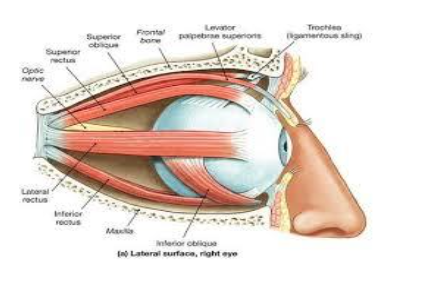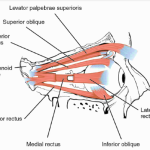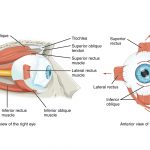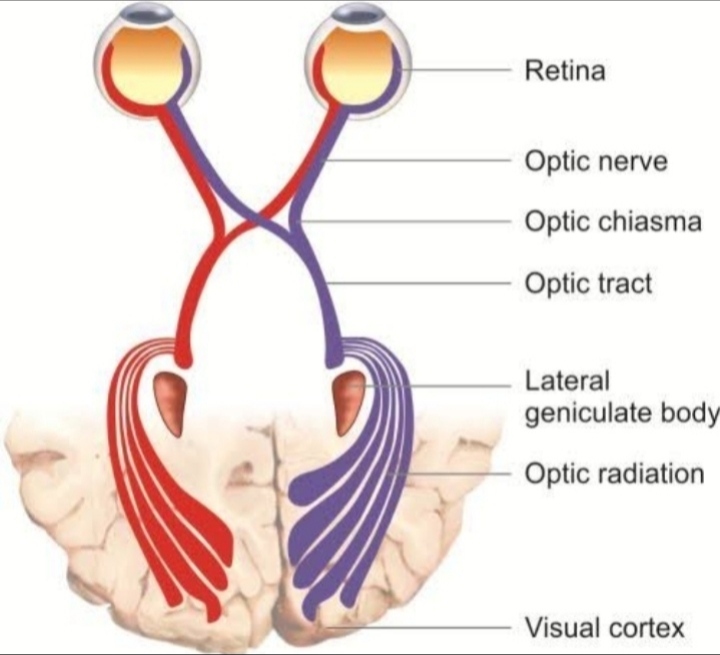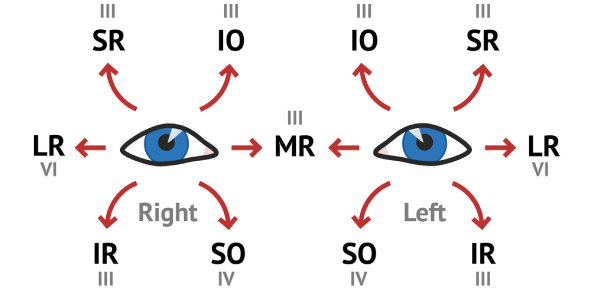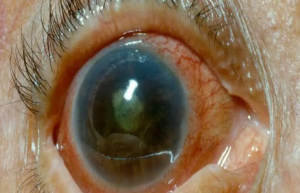Extraocular muscles consists of six muscles which controls the movement of the eye , six muscles name is superior rectus, inferior rectus , medial rectus ,lateral rectus , superior oblique and inferior oblique . Rectus muscle originate from the annulus of zinn , which is attached at the apex of the orbit , encircling the optic foramina and medial part of the superior orbital fissure , medial rectus arises from the medial part of the ring, superior rectus arises from the superior part , inferior rectus arises from the inferior part and lateral recus arises from lateral part . Superior oblique muscle arises from the sphenoid bone and medial to the optic foramen by a narrow tendon, which is partially overlapping the origin of levator palpebrae superioris.
Extraocular muscle rotate the eyeball around vertical , horizontal and anterior posterior axis . Medial and lateral rectus muscles are parallel to the optical axis of the eyeball s they have only one action but superior rectus make an angle 23 degree and reflected tendon of superior oblique muscles of 51 degree , inferior rectus muscle make an angle of 23 degree and reflected tendon of inferior oblique muscle is 51 degree with the optical axis in the primary position , so they have subsidiary action in addition to the main action .
Action of six extraocular muscle is adduction , abduction, elevation , depression , intorsion and extosrsion
Lateral rectus muscle action is abduction ,abduction means outward movement of the eye around the vertical axis . Adduction is main action of adduction , it is the inward movement of the eye around the vertical axis . Elevation is the primary action of superior rectus muscle , it is the upward movement of the eye around the horizontal axis . Depression is the primary action of inferior rectus muscle , it is the down ward movement of the eye around the horizontal axis . Intorsion is the primary action of the superior oblique muscle , it the rotatory movement of the eye along the anteroposterior axis in which superior pole of the cornea . Extorsion is the primary action of the inferior oblique muscle , it is the rotatory movement along the anteroposterior axis in which superior pole of the cornea which moves laterally .
Factors involved in mechanisms of extraocular muscles action :
- Cross –sectional area of the muscle :- Cross sectional area of the horizontal recti is maximum , the vertical recti average about 75 % and the oblique about 50 % of the size of the horizontal muscles . In general , antagonists such as medial and lateral recti are similar in size , and thereby balancing opposing forces.
- Length of the muscle :- average length of the various extraocular muscle is lateral rectus is 15 mm , medial rectus is 6 mm , superior rectus is 8.4 mm , inferior rectus is 9 mm , superior oblique is 5 mm and inferior oblique is 17 mm. Normal amplitude of rotation is 10 mm , which change in each direction , sacrifice of muscle lengthduring resection of the muscles usually reduces the amplitude of eye rotation.
- Muscle axis of rotation :- It is perpendicular to the muscle plane erected in the centre of rotation. The individual muscle pulling on the eye will rotate the globe around the axis through the centre of rotation.
- Role of muscle pulleys :- Muscle pulleys, formed by stiff connective tissue have been described t exist for rectus muscle as part of their sleeves at or just posterior to the equator of globe . Muscle pulleys affect the ocular movements in different positions of gaze.
- Arc of contact :- The arc of contact is the distance on the sclera between the tangential point and the centre of the anatomic insertion of the muscle on the sclera . The arc of contact varies in different position at the tangential point as the eye is abducted , the arc of contact of lateral rectus is reduced , while in adduction it is increased.
The power of the muscle is proportionate to its length and arc of contact , recession of muscle weakness the action of the muscle by shortening its length and arc of contact in the various positions of gaze.
